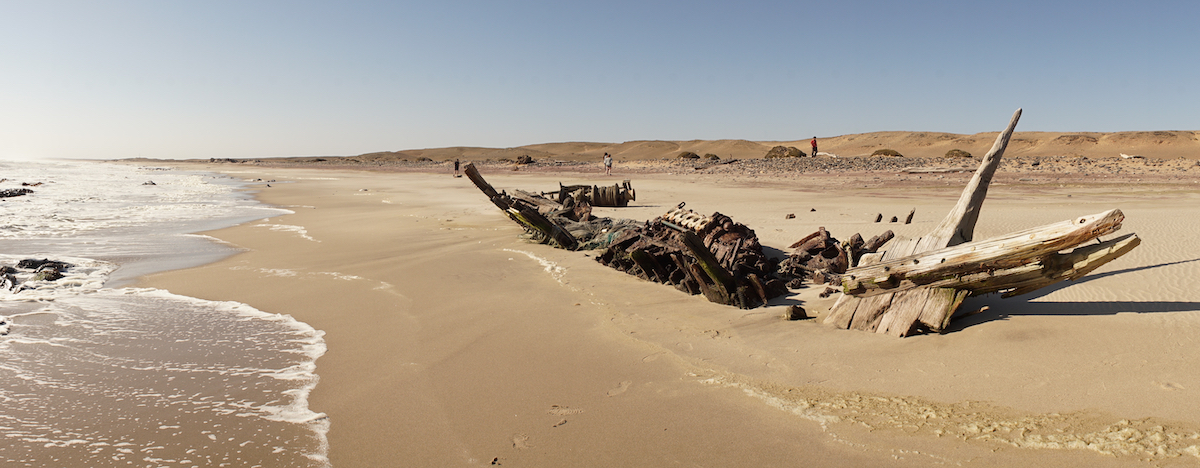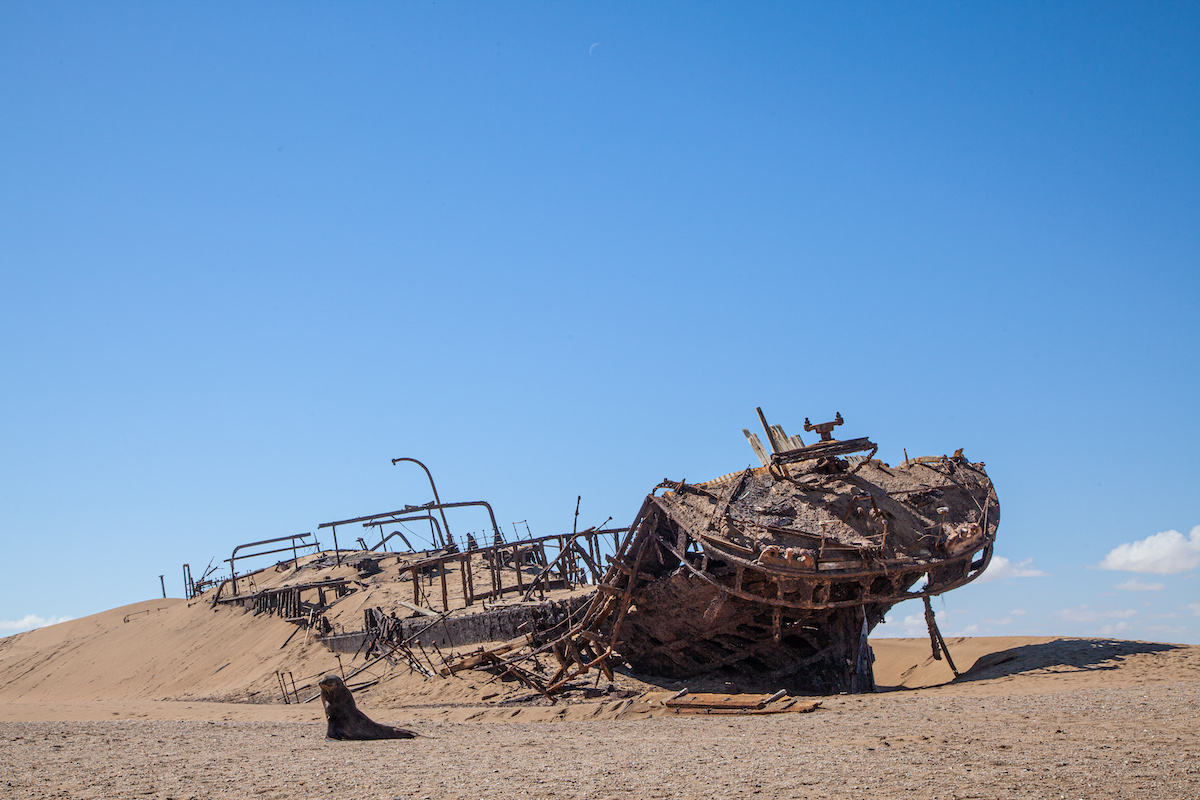

The most Famous Shipwrecks of Namibia Checklist
An enigmatic and desolate stretch of land wedged between the vast Namib Desert and the icy Atlantic Ocean in the southwestern parts of Africa, is known as the Skeleton Coast. More often than not, this inhospitable coastal region in Namibia presents a haunting and eerie facade. But beyond lies a gripping history that speaks of tragedy and adventure, which gave the Skeleton Coast its name. Countless shipwrecks have met their demise along its treacherous shores. About 300 ships are recorded to have sunk in these unforgiving waters, while evidence suggests that another 200 vessels may have had the same fate. Today, the map of the Skeleton Coast shows the locations of some wrecks. Here are the best-known shipwrecks that you can tick off during your visit to Namibia.
From the Spring 2023 issue

Dunedin Star
Probably the most famous of all the shipwrecks along the coast. The British passenger-cargo ship, en route to South Africa in 1942, struck rocks and began to sink. Its crew and passengers faced a perilous struggle for survival in the harsh desert environment. After weeks of hardship, they were miraculously rescued, thanks to several brave rescue missions.

Eduard Bohlen
This German cargo ship ran aground in thick fog in 1909 at Conception Bay. Its deteriorating remains now lie stranded some 400 metres inland from the sea, half-buried in the shifting sands of the Namib Desert. It is a surreal sight.

Otavi
The Otavi was a cargo ship that sank in 1945 due to a navigational error. Its wreckage in Spencer Bay remains visible.

Shawnee
The Shawnee was a fishing trawler that sank in 1976 where the shifting sands of the dunes meet the sea. Sometimes it is covered with sand while at other times it lies in the water. It is much photographed because of this.

Zeila
In August 2008, the Zeila, a fishing trawler, got stranded near Die Walle, a fishing spot south of Henties Bay. It had been sold as scrap metal to an Indian company by Hangana Fishing of Walvis Bay. Destined for Bombay, India, it came loose from its towing line after departing Walvis Bay and drifted north on the Benguela Current.






